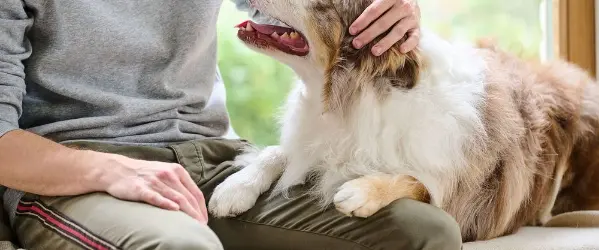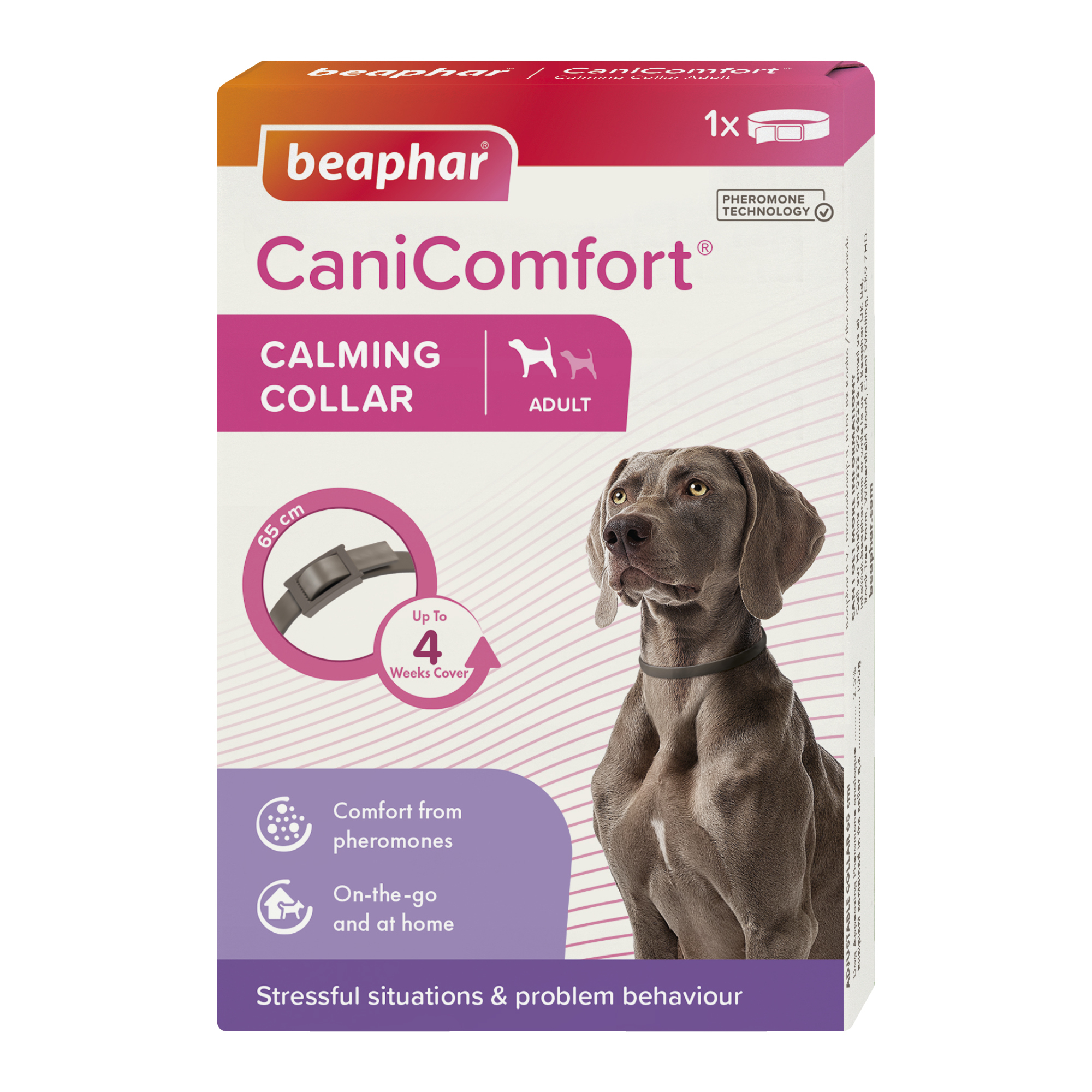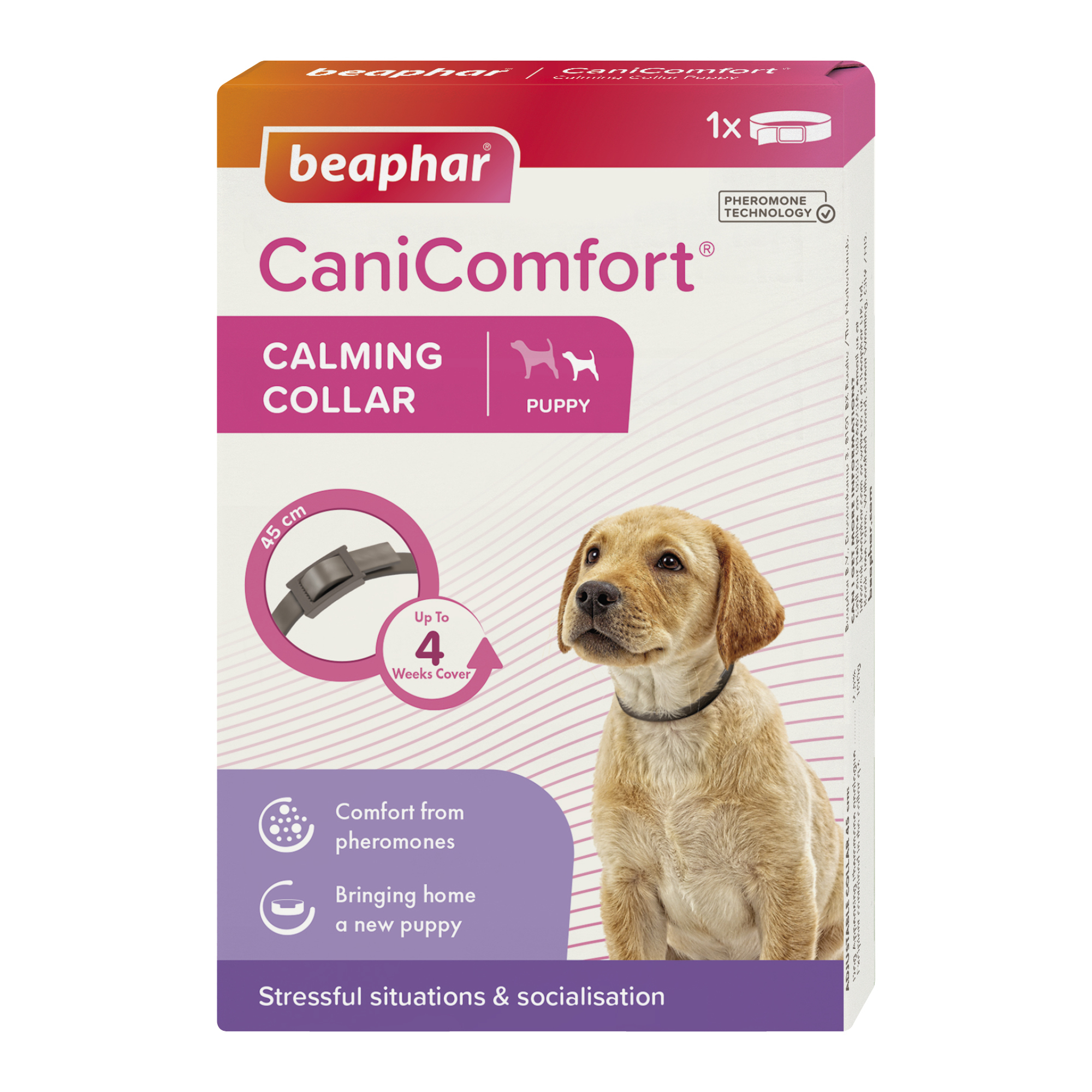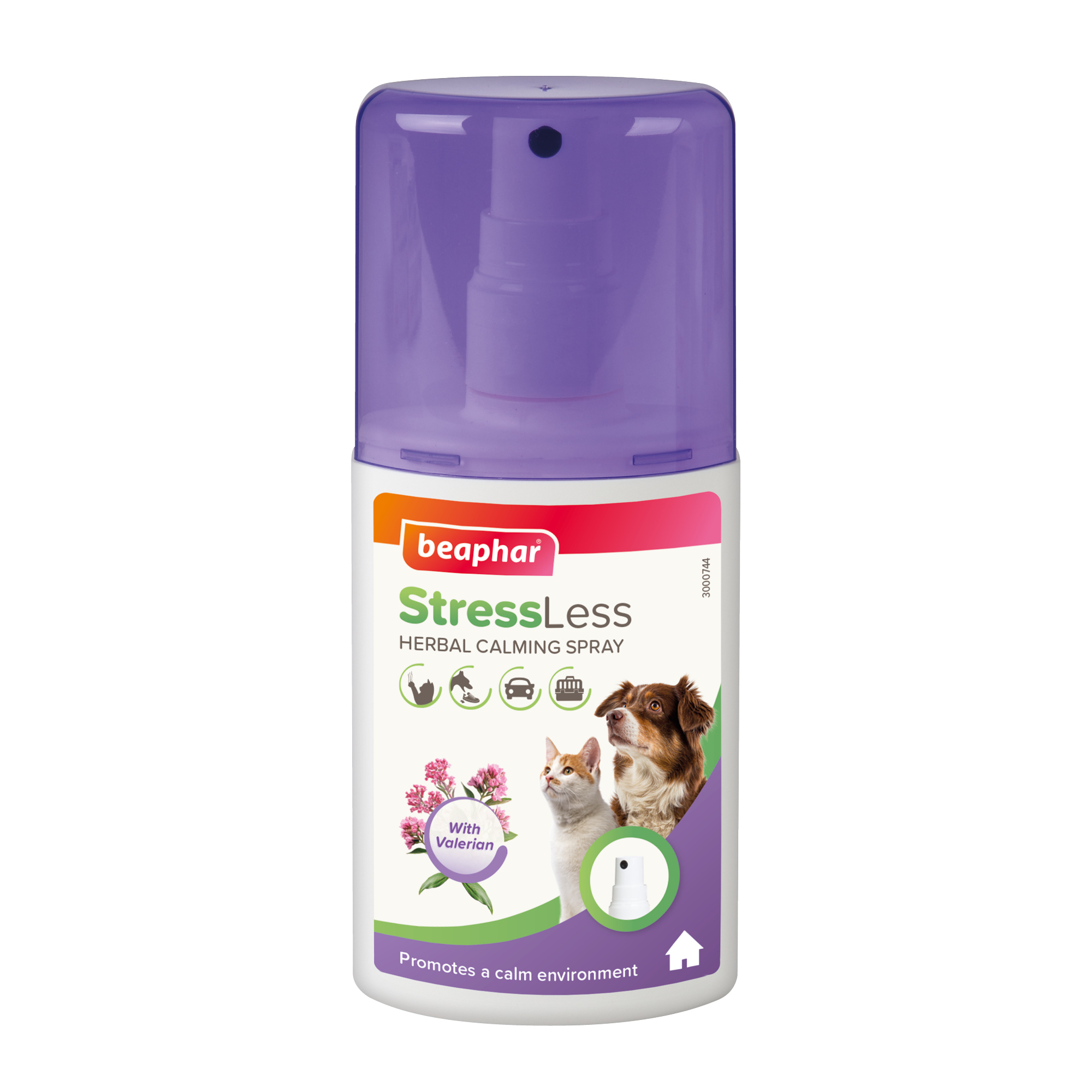Stress and anxiety in dogs - signs and solutions
Seeing our dogs feeling anxious is worrying for us as owners. Many things can cause our dogs to feel nervous or stressed. Some causes of stress are obvious, such as fireworks or vet visits. But even everyday events, like being left home alone, can cause our dogs to feel unsettled. While people can tell you if they’re feeling anxious or nervous, our dogs can’t. Stress in dogs occasionally causes negative long-term health problems. So, knowing the signs of stress to look out for will help you identify and solve the problem quickly.
Signs of stress and anxiety in dogs
Excessive barking or howling, chewing and other destructive behaviour, behaving differently with people, animals or the environment, urinating or soiling in the home, stance and posture, changes in grooming, eating and sleepingWhat the signs of stress and anxiety in dogs?
There are many signs of stress and anxiety in dogs, these include excessive barking or howling, chewing and other destructive behaviour, behaving differently with people, animals or the environment, urinating or soiling in the home, stance and posture, changes in grooming, eating and sleeping
Excessive barking
Barking is a natural part of being a dog, it’s one of the ways they communicate. But, if your dog is barking constantly, they could be trying to tell you something is scaring them or making them feel nervous.
Chewing and other destructive behaviour
Chewing furniture or other household items can be annoying for an owner but it is a natural part of being a dog. Just as babies need to chew when they’re teething, so do puppies. In older dogs, while chewing can be for fun or to explore their environment, it can also be due to stress. Just like when people get stressed and bite their fingernails, a sign of stress in dogs is chewing things and other destructive behaviour.
Behaving differently with people, animals or the environment
Look out for changes in how your dog behaves and interacts with you, other people and pets. Behaving differently is one of the biggest indicators of stress in dogs. If your usually social and playful dog is withdrawn and nervous, something could be making them feel stressed or anxious. If your dog continues acting differently long after you believe you’ve removed any stress factors, contact your vet.
Urinating or soiling in the home
If your dog doesn’t normally go to the toilet in the home, it is a sign that something is wrong. When a dog becomes stressed or anxious, the unsettled feeling can cause them to have an accident. However, inappropriate toileting can also indicate a health problem, so if you have any concerns consult your vet.
Stance and posture
Just like a person, you can tell a lot about a dog from the way they’re standing. A dog with a lowered body position, tail down, and ears rotated back and down could be indicating submission, suggesting they’re feeling worried. When dogs get stressed they may also pant more rapidly, which can lead to dehydration. Keep an eye on your dog's water bowl and make sure it’s topped up.
Changes in grooming, eating and sleeping
Like people, stress in dogs may impact other parts of their health and well-being. Constantly grooming the same place can be a sign of stress in dogs, which can lead to bald patches. Dogs generally love food, if your dog is refusing their favourite treats something may be bothering them. Similarly, your dog may suffer from disturbed sleep.
If your dog’s unusual grooming, eating or sleeping habits continue after you’ve removed any stress factors, contact your vet for further advice.
How can I help reduce reduce problem behaviour, stress and anxiety in my dog?
If your dog is showing signs of stress or anxiety, first you should try to remove the cause. Some stressful situations, such as a new home or addition to the family, can’t be removed. But, there are dog calming products available to help reduce stress and anxiety in dogs.
Beaphar offers a range of calming solutions available in a variety of formats. The Beaphar CaniComfort® Calming Range is a simple and effective solution to reducing stress-related behaviour in dogs. Beaphar CaniComfort® uses a synthetic replica of the Dog Appeasing Pheromone (DAP). Dog Appeasing Pheromones provide dogs with a comforting message triggering an instinctive calming response, helping them to feel safe and reassured, thus reducing problem behaviour and feelings of anxiety.
Beaphar StressLess is calming rooted in nature. Containing herbal ingredients that are well-known for their calming properties and often used in human healthcare to manage stress and anxiety, they are a popular choice amongst pet owners.
Whether you choose pheromone technology or a herbal approach, Beaphar Calming Products are ideal for helping reduce stress-related behaviour and general anxiety, and supporting dogs during stressful situations.
|
Diffusers |
Collars |
Spot-Ons |
Tablets |
Sprays |
|
Beaphar CaniComfort®
|
Beaphar CaniComfort®
|
Beaphar CaniComfort®
|
|
Beaphar CaniComfort®
|
|
Beaphar StressLess
|
Beaphar StressLess
|
Beaphar StressLess
|
Beaphar StressLess
|
Beaphar StressLess
|













